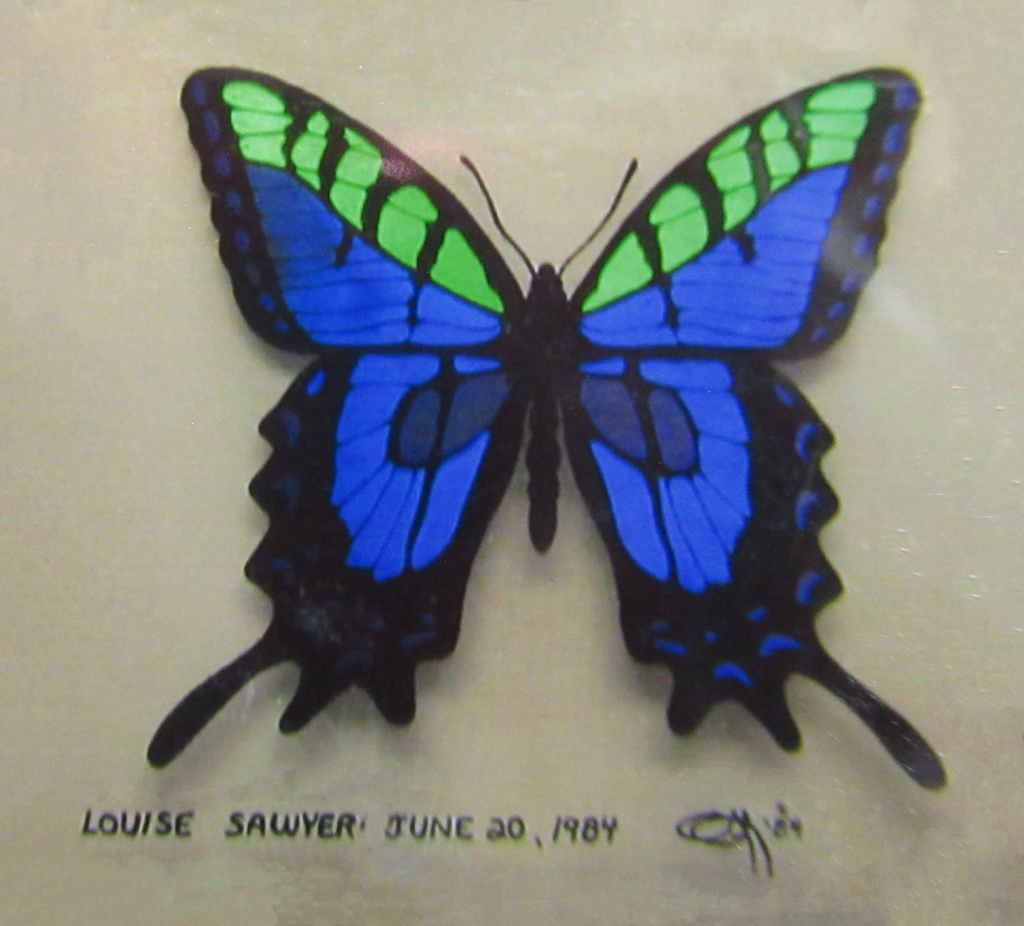
Interference Butterfly
Creation of this interference photograph began with opaque masks of green, blue, violet and black, with zones of partial transparency in areas of the photo where the color was to appear. The photosensitive element (PSE)—which was not panchromatic, but was sensitive only to the monochromatic light of the 632.8-nm illuminating laser—comprised a transparent base layer, a photosensitive layer, an index-matching fluid and an angular reflecting layer. The colors in the photograph arise from the different angles of incidence that the wave normal of the laser beam (expanded to a center diameter of around three inches) made with the PSE. The incident light interfered with the reflected light to form standing waves that were recorded by the PSE as partially reflecting, equally spaced layers. The spacing of those layers, when the recorded photograph is viewed in white light, determines the color reflected to the viewer’s eye.
—George M. Sawyer, Independent Scientist
